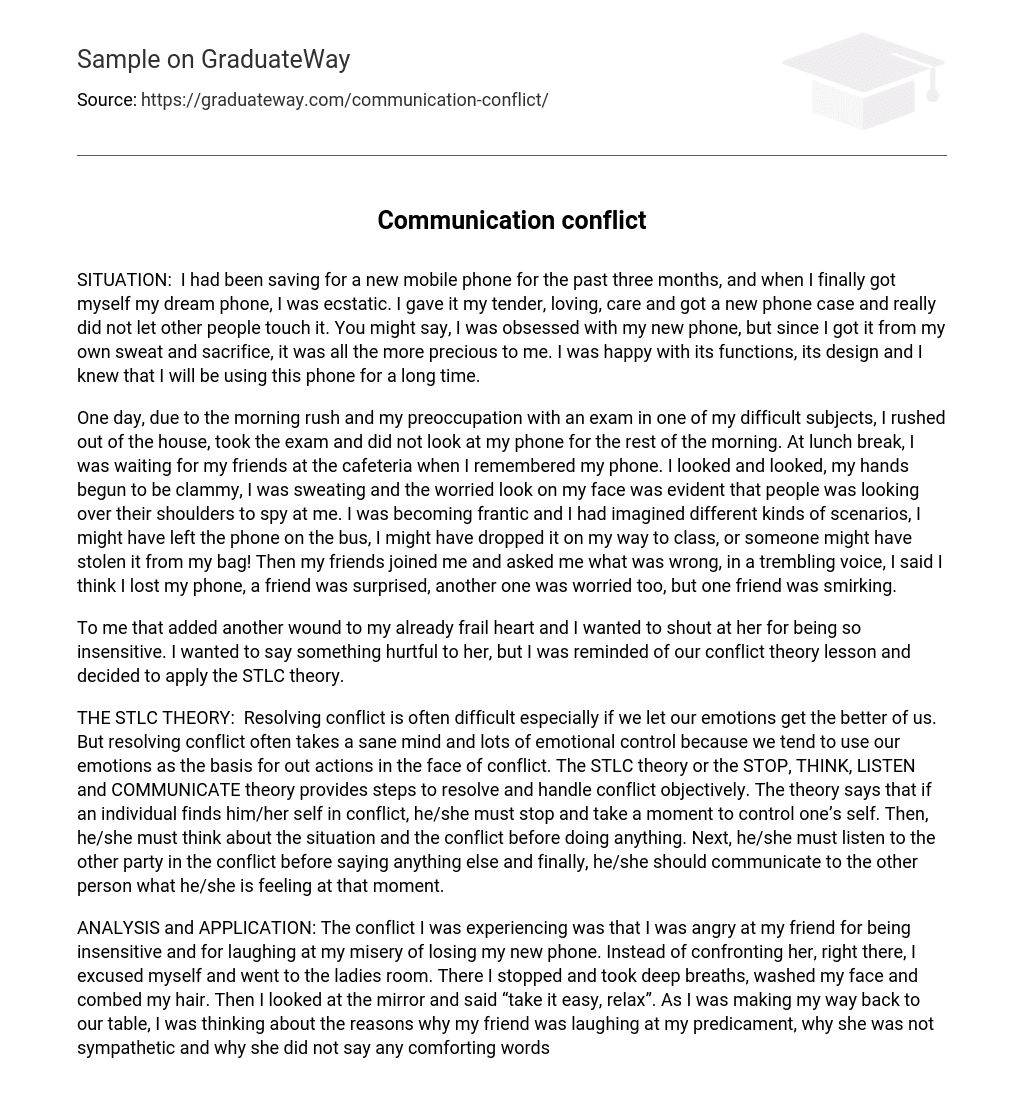SITUATION: I had been saving for a new mobile phone for the past three months. When I finally got my dream phone, I was ecstatic. I gave it tender loving care and even got a new phone case. I didn’t let other people touch it because it was so precious to me. You might say that I was obsessed with my new phone, but since I got it through my own hard work and sacrifice, it meant even more to me. The functions and design were perfect, and I knew that this would be the phone that would last me a long time.
One day, I was in a rush due to the morning rush and my preoccupation with an exam in one of my difficult subjects. After taking the exam, I did not look at my phone for the rest of the morning. At lunch break, while waiting for my friends at the cafeteria, I suddenly remembered my phone. As I searched and searched for it, my hands began to get clammy and sweat started pouring down my face. The worried look on my face was evident enough that people were looking over their shoulders to spy on me. My anxiety levels were rising as I imagined different kinds of scenarios – maybe I left it on the bus or dropped it on my way to class or someone might have stolen it from me! Then finally, when my friends joined me and asked what was wrong, in a trembling voice, I said I think I lost my phone.” One friend was surprised while another one also got worried but one friend just smirked.
To me, that added another wound to my already fragile heart. I wanted to shout at her for being so insensitive and say something hurtful, but then I remembered our conflict theory lesson and decided to apply the STLC theory.
The STLC Theory: Resolving conflict can be difficult, especially if we let our emotions control us. However, resolving conflict requires a clear mind and emotional control because our actions in the face of conflict are often based on our emotions. The STLC theory, also known as the STOP, THINK, LISTEN and COMMUNICATE theory provides steps to handle conflicts objectively.
The theory suggests that if an individual finds themselves in a conflict situation, they should stop and take a moment to regain control. Then they should think about the situation and the conflict before taking any action. Next, they should listen to the other party involved in the conflict before saying anything else. Finally, they should communicate their feelings to the other person.
Analysis and Application:
The conflict I was experiencing was that I felt angry at my friend for being insensitive and laughing at my misery of losing my new phone. Instead of confronting her right there, I excused myself and went to the ladies’ room. There, I took deep breaths, washed my face, and combed my hair. Then, looking in the mirror, I said to myself take it easy, relax”.
As I made my way back to our table, I thought about why my friend laughed at me when she saw me upset. Why wasn’t she sympathetic or comforting? What would happen if she lost something valuable?
As I approached the table, I sat down silently. My friends immediately began suggesting ways to find my lost phone and how to confirm that it was missing. I listened as all three of them spoke, and slowly felt the heaviness lifting from me. Then, the friend who had upset me offered to call my phone to see if it was still on – if it was, maybe I had just misplaced it. Despite still feeling hurt by her actions, finding my phone was more important at that moment. So I nodded when they asked if they could call it. We all waited anxiously as the phone rang, until a familiar voice answered – it was my sister! It turned out that I had left my phone at her place after having dinner with her the night before. Relief washed over me and I couldn’t stop beaming with happiness.
While we were on our way to the library, I expressed to my friend that I was hurt by her earlier reaction. She appeared serious and explained that she wasn’t paying attention; rather, she was grinning at something funny happening at another table. It wasn’t until I went to the ladies room and my friends told her why I was upset that she understood. We both laughed at how silly the situation was and what a day it had been!
The STLC theory has helped me to resolve conflicts smoothly. Without this theory, I might have said something hurtful that could have caused a rift in our friendship. Now, I am glad that I took this course and that I have good friends.





